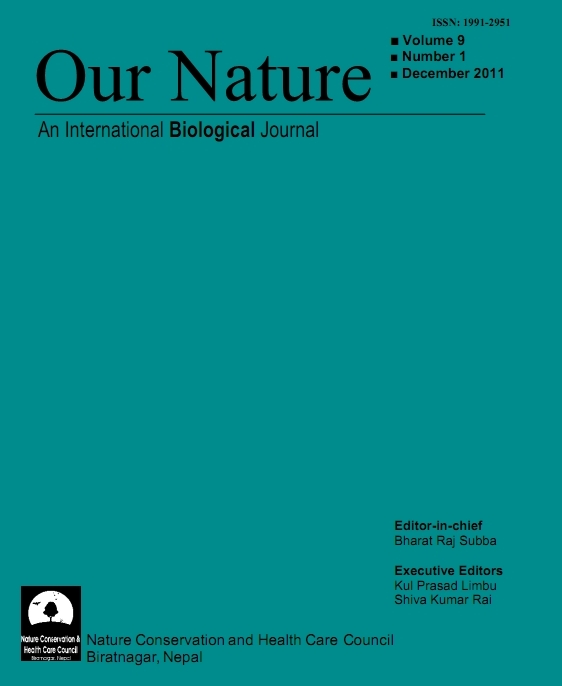Physico-chemical Parameters of Koshi River at Kushaha Area of Koshi Tappu Wildlife Reserve
DOI:
https://doi.org/10.3126/on.v9i1.5746Keywords:
Koshi River, physico-chemical parametersAbstract
The Koshi river is the major tributaries of the Ganges which originates from the snowy peaks of Tibetan plateau in the central Himalayas. Its total catchment area is 60,400 km2, of which 28,140 km2 lies in Nepal, while the remainder is situated in Tibet. It passes from Nepal to India via the Koshi Tappu Wildlife Reserve area of Nepal. It destroys large area through floods, especially in India. This paper deals with the air temperature and phyco-chemical parameters like temperature, transparency, pH, oxygen, carbondioxide, alkalinity, hardness, chloride and biological oxygen demand of water of Koshi river at Kushaha area of Koshi Tappu Wildlife Reserve. The water temperature was recorded maximum in summer season but the transparency, pH, dissolved oxygen, total alkalinity and total hardness were recorded maximum in winter season. Similarly, free carbondioxide was maximum in rainy season and chloride and biological oxygen demand were recorded maximum in summer season. The air temperature and water temperature had positive and significant correlation with free carbondioxide and biological oxygen demand. Dissolved oxygen had positive and significant correlation with pH, total alkalinity and total hardness. Similarly, total alkalinity had positive and significant correlation with transparency, total hardness, chloride etc.
Downloads
Downloads
How to Cite
Issue
Section
License
This license enables reusers to distribute, remix, adapt, and build upon the material in any medium or format for noncommercial purposes only, and only so long as attribution is given to the creator.




